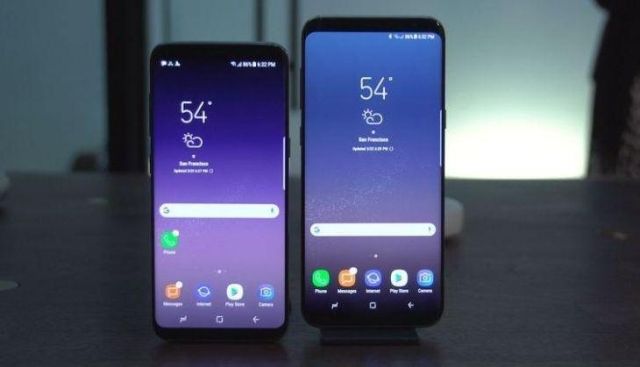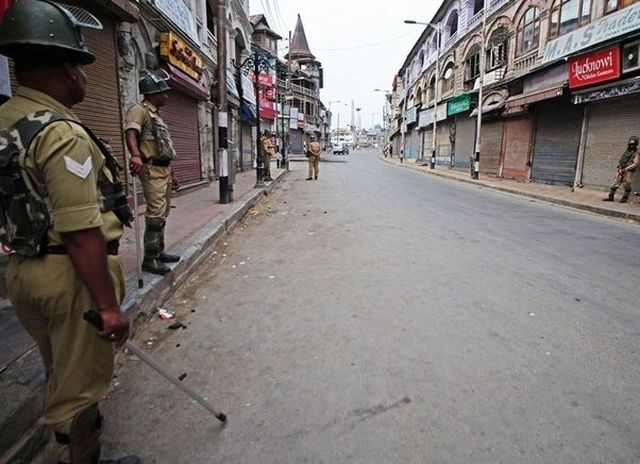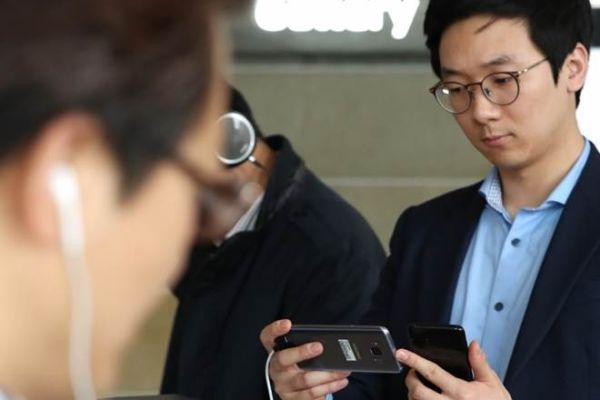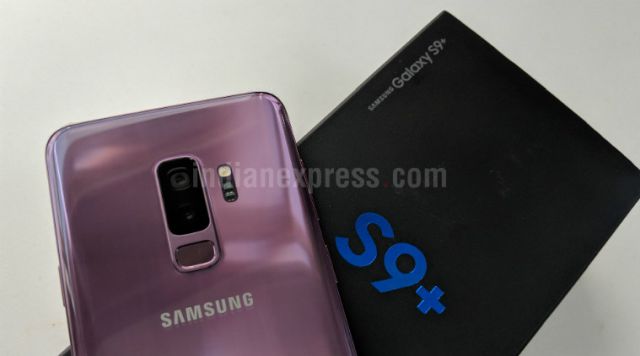
by admin | May 25, 2021 | Business, Markets, Sales, SMEs
 New Delhi : Samsung India has sold over 20 lakh units of its recently-launched Galaxy J8 and J6 mid-segment smartphones in India, attracting nearly 50,000 consumers a day, the company said on Monday.
New Delhi : Samsung India has sold over 20 lakh units of its recently-launched Galaxy J8 and J6 mid-segment smartphones in India, attracting nearly 50,000 consumers a day, the company said on Monday.
Galaxy J6 was launched on May 22 while Galaxy J8 was introduced on July 1.
“We are happy with the huge success of Galaxy J8 and J6 smartphones. Our philosophy of keeping our ears to the ground and incorporating consumer feedback into our products has paid off,” said Asim Warsi, Senior Vice President, Samsung India.
The “Chat-over-Video” feature in Infinity models received an overwhelming response with more than 50 per cent consumers using it on a regular basis.
“Galaxy J8 and J6 have set the standard for an unparalleled viewing experience with our signature super AMOLED Infinity Display,” Warsi added.
Galaxy J8 is available at Rs 18,990 and Galaxy J6 (64GB and 32GB variants) are available at Rs 15, 990 and Rs 13,990, respectively.
Both Galaxy J8 and J6 sport Samsung’s signature “Infinity Design” philosophy, giving users nearly 15 per cent more display area without increasing the overall size of the device.
The Super AMOLED display deliver an 18.5:9 aspect ratio, providing more browsing space.
Galaxy J8 also sports advanced dual rear camera with flagship “Live Focus” feature, where users can bring sharp focus to the foreground while blurring out the background.
“Galaxy J, known for unique ‘Make for India’ innovations, has a stellar legacy, accounting for one in three smartphones sold in the country. We are confident that the new devices will help us further increase our market share in the country,” Warsi noted.
Samsung shipped 9.9 million smartphones in India in the second quarter of 2018, registering almost 50 per cent annual growth rate — its best since the fourth quarter of 2015, Singapore-based market research firm Canalys said last week.
Samsung “J2 Pro” was the top model in the second quarter, with 2.3 million units shipped in India.
—IANS

by admin | May 25, 2021 | News
 Srinagar : A blanket ban was announced on Thursday on the use of smartphones by police guards during duty hours in Jammu and Kashmir following a rising number of incidents of weapon snatching by militants.
Srinagar : A blanket ban was announced on Thursday on the use of smartphones by police guards during duty hours in Jammu and Kashmir following a rising number of incidents of weapon snatching by militants.
In a detailed order, A.K. Choudhary, the Additional Director General of Armed Police, said: “It has been observed that recent weapon snatching incidents have occurred (as) sentries on duty remain engaged with their smartphones for most of the time, thereby compromising with their legitimate duty.
“This tendency has considerably increased and resulted in weapon snatching/killing of policemen in the state, particularly in the Valley.
“All guard personnel shall ensure compliance of the standing drill in letter and spirit.”
Besides imposing the ban on use of smartphones, the order also said that the weapon must be chained to the guard’s body as per the standard instructions contained in the drill for such duties.
—IANS

by admin | May 25, 2021 | Business, Corporate, Corporate Buzz, Large Enterprise
 By Faisal Kawoosa,
By Faisal Kawoosa,
The new draft telecom policy released by the Department of Telecom is a lucid, comprehensive attempt that balances the present hard realities with the aspirations of the future. There is a wide base of population that needs to connect while the already connected want to climb up the technology ladder to stand at par with global advances.
The focus of the policy looks at ‘Connect’ and ‘Propel’. That is how our telecom ecosystem exists. One of the six strategic objectives to be achieved through this policy guide by 2022 is to propel India’s rank on the International Telecom Union’s Global ICT (Information and Communication Technology) Development Index in top 50 nations from its lowly 134th rank in 2017.
To make India advance in this global benchmarking framework, the government has to do more than putting impetus through a policy document. There is in fact a ‘flaw’ in the present methodology that will always skew the results in favour of early adaptor nations of ICT. With the present framework, India can never rank high on this global benchmarking measure.
For countries like India, the mobile phone is the first and only computing device for a majority of the population. Today’s smartphone is more powerful than supercomputers of yesteryears. They have 2.7 Ghz clock rates and deca-core processors with 8 GB RAM — something which even the most powerful computers a couple of decades ago did not have.
The point being made is that smartphones are no less capable in computing power and there is no reason to exclude them while gauging the ICT infrastructure and access of any country. There will be complexities like taking into account that many households have a PC as well as a smartphone, and in many families each member has at least one Smartphone.
Globally emerging economies led by India have to take up this matter with ITU and get the framework of ICT Development Index corrected for this aberration that may have arisen over a period of time. Much of this is going to hold true for nations in Africa, which are following us in the developmental cycle. The emergence of an overlapping category like ‘smartified’ featurephone adds another dimension, which could merit to be as good as a rudimentary PC equivalent.
The Department of Telecom along with the regulator TRAI and other industry bodies should jointly take up this matter with ITU and get the Index framework and methodology augmented to have a more realistic view of markets like India. Just this alignment might advance the rank of India to less than 100. With strategies proposed in The National Digital Communications Policy (NDCP 2018), as it is officially called, it could further propel India to a higher level.
This may be just one of the aspects where government intervention is required beyond the purview of policy implementation, but which could have far reaching consequences on the overall health of the sector. Similarly, it might be a good exercise to examine other such areas where a change is warranted at a global level to have the correct reference points giving a fair assessment of things. Smarphones are a good starting point.
(Faisal Kawoosa is Head, New Initiatives at CyberMedia Research. The views expressed are personal. He can be contacted at releases@cmrindia.com)
—IANS

by admin | May 25, 2021 | Business, Markets, Medium Enterprise, Online Marketing
 New Delhi : Telecom services provider Bharti Airtel on Friday announced the availability of Samsung’s latest flagship Galaxy S9 and S9+ smartphones on its online store where users can buy the 64GB variant of Galaxy S9 and S9+ for a down payment of Rs 9,900.
New Delhi : Telecom services provider Bharti Airtel on Friday announced the availability of Samsung’s latest flagship Galaxy S9 and S9+ smartphones on its online store where users can buy the 64GB variant of Galaxy S9 and S9+ for a down payment of Rs 9,900.
Buyers have to pay subsequent 24 monthly instalments of Rs 2,499 and Rs 2,799 for Galaxy S9 and S9+ respectively.
The devices were launched in India earlier this month. The price of Galaxy S9 starts at Rs 57,900 and the S9+ starts at Rs 64,900.
The monthly instalments for both the devices will include a postpaid plan with 80GB data, unlimited calling and subscription to exciting content such as one-year Amazon Prime membership, Airtel Secure, Airtel TV and Wynk Music, the company said.
Airtel’s online store is a platform where prospective buyers can get budget-friendly down payment options and bundled monthly plans.
“We are happy to have the latest Samsung flagship on our online store. We have made it very convenient for customers to own this premium device by removing the price barrier and offering instant financing,” Vani Venkatesh, Chief Marketing Officer, Bharti Airtel, said in a statement.
Samsung’s “Dual Aperture” (F1.5/F2.4) in S9+ — the world’s first such feature in any smartphone — automatically lets in more light when it is dark and less light when it is too bright, taking photos that are crisp and clear.
—IANS

by admin | May 25, 2021 | Business, Emerging Businesses, Marketing Basics, Markets, Networking, Online Marketing, SMEs, Technology
 New Delhi : Panasonic India on Monday made available its hitherto online-exclusive smartphones — including the recently-launched P-100 (2GB variant) — across leading retail outlets in the country.
New Delhi : Panasonic India on Monday made available its hitherto online-exclusive smartphones — including the recently-launched P-100 (2GB variant) — across leading retail outlets in the country.
ElugaI9, Ray 500 and Ray 700 devices which were available only on Flipkart can now be purchased offline.
Eluga I9 is priced at Rs 7,799, Eluga Ray 700 for Rs 10,499 and P100 (2GB variant) for Rs 6,299, the company said in a statement.
In December, the company has made available dual-camera device Eluga Ray 500 for Rs 8,999 at retail outlets.
“Responding to the overwhelming response we received form our customers after making our first dual-camera phone, Eluga Ray 500, available through leading retail outlets, we have made a strategic move of increasing the presence of our online portfolio across the offline channel,” said Pankaj Rana, Business Head-Mobility Division.
“ElugaI9, Eluga Ray 700 and P100 (2GB) have been well received in the online space and we believe this trend will continue in the offline space as well,” he added.
—IANS

 New Delhi : Samsung India has sold over 20 lakh units of its recently-launched Galaxy J8 and J6 mid-segment smartphones in India, attracting nearly 50,000 consumers a day, the company said on Monday.
New Delhi : Samsung India has sold over 20 lakh units of its recently-launched Galaxy J8 and J6 mid-segment smartphones in India, attracting nearly 50,000 consumers a day, the company said on Monday.



